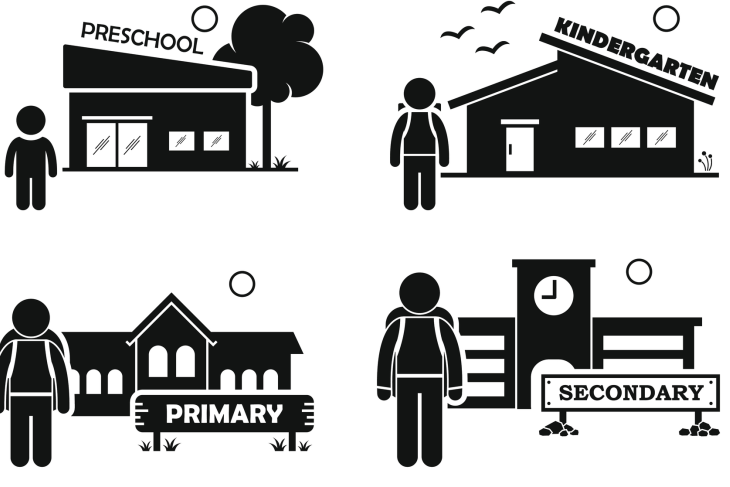Editor’s Note: Back in September 2018, awaiting the election of our next governor, we at the Fordham Institute began developing a set of policy proposals that we believe can lead to increased achievement and greater opportunities for Ohio students. This is one of those policy proposals.
With Mike DeWine sworn in as Ohio’s 70th governor, and with his administration now well underway, we are proud to roll out the full set of our education policy proposals. You can download the full document, titled Fulfilling the Readiness Promise: Twenty-five education policy ideas for Ohio, at this link, or you can access the individual policy proposals from the links provided here.
Proposal: Ohio should expand eligibility for the income-based EdChoice scholarship to families with incomes at or below four times the federal poverty level and make them available to students in grades K–12. For newly eligible families with incomes between 200 and 400 percent of federal poverty levels, scholarship amounts should be determined based on a sliding scale, with higher-income households receiving lesser sums. Those at or below 200 percent of the poverty level should receive the full scholarship amount, presently set at $4,650 for grades K–8 and $6,000 for grades 9–12. Funding should flow directly from the state rather than through school districts. In conjunction with an expanded scholarship program, Ohio should increase transparency around non-public-school performance by requiring the ODE to report student-growth results.
Background: Over the past two decades, Ohio has provided an increasing number of scholarships (a.k.a. “vouchers”) that enable families to access private schools. Today, Ohio has five programs, each with its own eligibility and program rules: (1) Cleveland Scholarship; (2) Traditional EdChoice; (3) Income-Based EdChoice; (4) Autism; and (5) Jon Peterson Special Needs. As figure 1 indicates, these programs have been phased in gradually, with participation now exceeding 45,000 pupils. But even with the recent expansions, too many youngsters from working-class homes are excluded from such educational opportunities. Traditional EdChoice is restricted to students who would otherwise attend low-performing public schools, generally located in Ohio’s highest-poverty communities; Cleveland is only open to children residing in that district. Meanwhile, the newer Income-Based EdChoice is open only to children in grades K–5 and those whose family income is at or below twice the federal poverty level (about $50,000 for a family of four); the Autism and Peterson scholarships are limited to students with special needs. Due to these eligibility constraints, private school options remain out of reach for many lower- and middle-income families unable to pay out of pocket for tuition. In terms of transparency for students’ academic outcomes, EdChoice and Cleveland participants must take state exams, and proficiency rates are reported (at an aggregate level) by their school of attendance.
Figure 1: Student participation in Ohio’s private school scholarship programs, 1997–2017

Data source: American Federation for Children, School Choice Yearbook (2016–17).
Proposal rationale: Many working-class parents—including those with income levels characteristic of first responders, nurses, and teachers—remain hard pressed to afford a private education for their children, should that be their preference. Ohio can open more opportunities for such families by providing financial assistance through an expanded Income-Based EdChoice program. Using a sliding scale to set scholarship amounts when family income exceeds 200 percent of federal poverty would allow Ohio to continue to target the bulk of its scholarship aid to the neediest families. Lastly, introducing a student-growth metric would improve public and parent understanding of the effectiveness of private schools educating scholarship students, apart from their baseline achievement.
Cost: Because the proposal funds scholarships directly rather than via deductions from school districts, the state would incur additional costs to fund an expanded Income-Based EdChoice. These costs would be offset by a reduction in state funds going to the students’ former schools. The exact fiscal impact depends on a variety of factors, including scholarship take-up rates, the state share index where students would have otherwise attended school, and whether the district funding was impacted by either caps or guarantees. The Legislative Service Commission has estimated that broadening eligibility in a way similar to this proposal may cost an additional $50 to $80 million per year, but that estimate doesn’t appear account for changes to the state-share index, which could reduce the cost to the state.
Resources: Information about private school scholarship programs across the nation can be found in the American Federation of Children’s report School Choice Yearbook (2016–17). For a review of research on scholarship programs, see Greg Forster’s report A Win-Win Solution: The Empirical Evidence on School Choice, published by the Friedman Foundation (2016). For details on Ohio’s scholarship programs, including proficiency data, see the ODE web page “Scholarships.” And for a fiscal analysis on legislation (SB 85 of the 132nd General Assembly) proposing to expand scholarships, see the Legislative Service Commission’s “Fiscal Note & Local Impact Statement” (2017).

